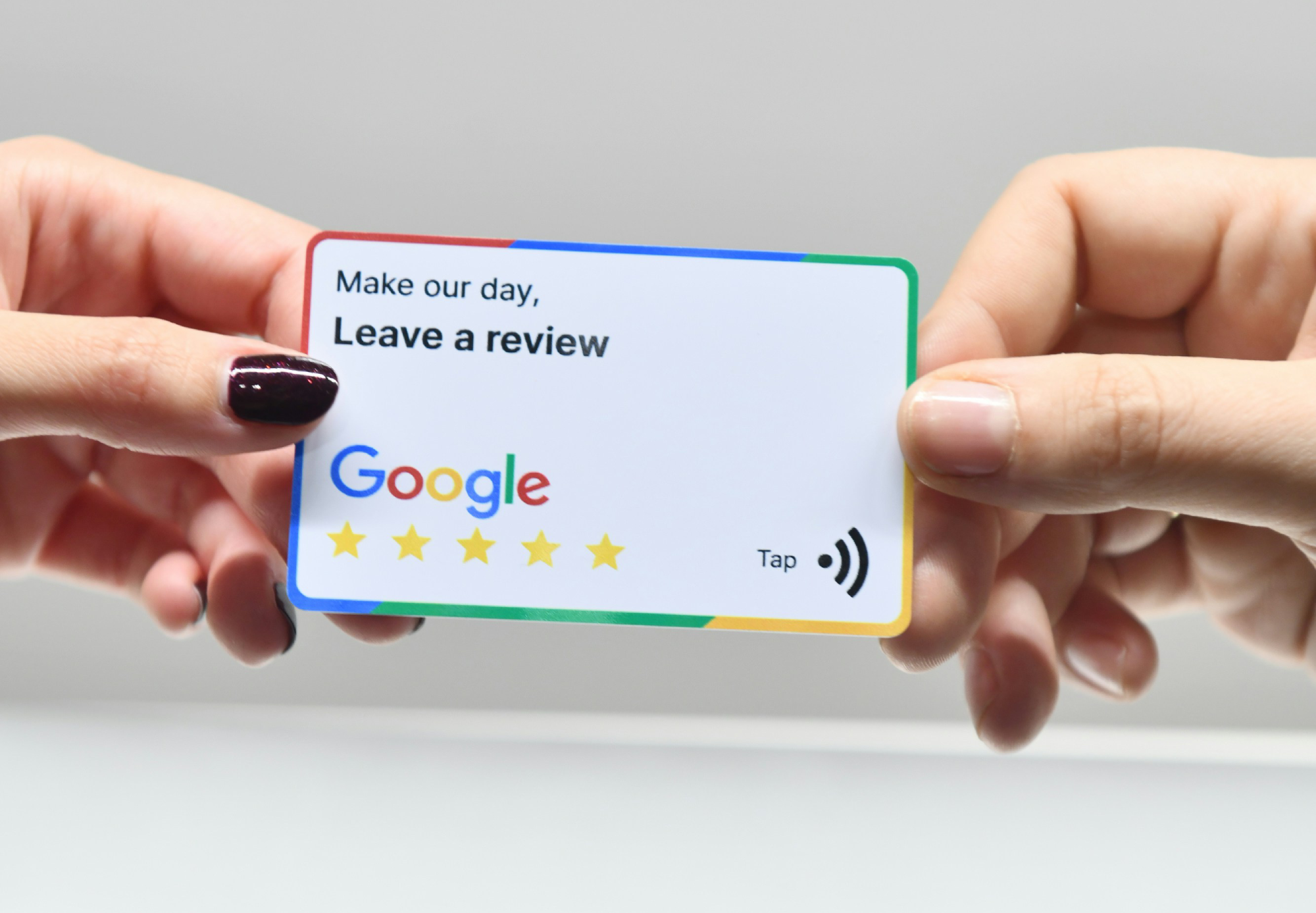Reputation matters—a lot. If you run a field service business, whether you’re an electrician, plumber, landscaper, or HVAC contractor, your next customer is probably going to check your Google reviews before they even think about calling you.
That’s why even a single bad review can sting. It can affect how people see your business and might even cost you a few jobs. But here’s the good news: a negative review doesn’t have to ruin your reputation.
In fact, when handled well, it can actually help. It shows future customers that you’re honest, professional, and willing to make things right when something doesn’t go perfectly.
In this article, we’ll break down how to keep an eye on your reviews, respond to the bad ones with confidence, and turn tricky situations into trust-building moments.
Contents
- Why Reviews Really Matter
- Negative Reviews Happen—But You Can Handle Them
- How to Respond to a Negative Review
- What to Do About Fake or Unfair Reviews
- How to Prevent Bad Reviews Before They Happen
- How to Get More Positive Reviews
- Tools That Make Review Management Easier
- Make Reviews Work for You
Why Reviews Really Matter
These days, reviews play a big role in how people decide who to hire—especially when it comes to local services.
-
More than 90% of people check online reviews before picking a business
-
Just one bad review can turn nearly half of them away
-
And Google tends to rank businesses with better, more consistent reviews higher in local search results
If you’re in the field service space, this matters even more. You don’t have a storefront or fancy signage to build trust. Most of the time, customers find you through Google or a recommendation, and your reviews are the first real impression they get. That alone can be the difference between a phone call and a pass.

Negative Reviews Happen—But You Can Handle Them
No matter how good your team is or how well you run things, a bad review will pop up sooner or later. Maybe it’s a mix-up, a delay, a tough customer, or something totally out of your hands. It happens.
What really matters is how you respond.
Most people aren’t expecting you to be perfect. What they do want to see is that you’re paying attention, treating people fairly, and willing to fix things when they go wrong. Handle it right, and that bad review might actually help your reputation instead of hurting it.
How to Respond to a Negative Review (Without Making Things Worse)
Dealing with a bad review can be frustrating, but the way you respond makes all the difference. Here’s a step-by-step approach to help you turn a tough situation into a chance to build trust.
1. Take a Breath Before You Reply
The worst move? Firing off a response while you’re still annoyed. Give it a little time—even just an hour or two. Then come back, read the review carefully, and try to look at it from the customer’s point of view. If there’s even a little truth to what they said, it’s worth acknowledging that privately before you start writing your response.
2. Acknowledge Their Experience
Start by showing you’ve heard them. You don’t have to agree with every detail, but a bit of empathy goes a long way.
Example:
“Hi John, thanks for your feedback. We’re sorry to hear your experience didn’t meet expectations.”
Keep it human. Skip the robotic or overly corporate language.
3. Apologise If It Makes Sense
A genuine apology can calm things down quickly. It’s not about admitting guilt—it just shows you care about doing right by your customers.
Example:
“We’re sorry the job took longer than expected. That’s not the standard we aim for.”
4. Share Some Context, Without Making Excuses
If there’s something important that helps explain what happened, feel free to include it. Just keep it short and avoid sounding defensive.
Example:
“A supplier delay affected our timeline, and we should’ve communicated that better. We appreciate your patience.”
This helps clarify things for future readers too.
5. Offer to Take the Conversation Offline
Once you’ve addressed the issue publicly, give them a way to connect with you directly.
Example:
“We’d love the chance to make this right. Please reach out to us at so we can chat about a solution.”
This shows you’re proactive and genuinely want to resolve things—not just save face.
6. If You Sort Things Out, Follow Up Publicly
If the customer reaches out and the issue gets resolved, go back and update your original reply or leave a follow-up comment.
Example:
“Thanks again for getting in touch, John. We’re glad we could work this out and appreciate the chance to fix things.”
This helps wrap things up neatly and builds trust with anyone else reading the review down the line.

What to Do About Fake or Unfair Reviews
Not every bad review is legit. Some might come from bots, ex-employees, or even competitors. Others might be from real customers—but with stories that are exaggerated, one-sided, or just flat-out wrong.
Even then, it’s important to respond. Staying silent can look like you’re avoiding the issue, and remember, your reply isn’t just for the person who left the review. It’s for anyone else reading your profile later on.
If You’re Dealing With a Fake Review
1. Flag it for removal
On Google, click the three dots next to the review and choose “Report review.” Pick the most relevant reason, like spam, off-topic content, or conflict of interest.
2. Respond anyway—calmly
Even if the review is clearly fake, leave a professional reply so others can see you’re aware and handling it.
Example:
“We don’t have a record of this customer or situation, but if this was posted in error, we’d be happy to speak directly and clear things up.”
3. Document everything
Take a screenshot and keep a record of the review, just in case you need to follow up with Google or another review platform later.
Google doesn’t remove reviews very often, but in cases where there’s clear spam, offensive language, or irrelevant content, you might get lucky.
Fieldmotion Brochure
See how Fieldmotion helps field service teams manage jobs, schedule staff, create invoices, and communicate with customers — all from one easy-to-use system.
How to Prevent Bad Reviews Before They Happen
The easiest way to protect your reputation? Stop problems before they start.
A lot of negative reviews come down to miscommunication or small issues that could’ve been sorted out early. When your team is clear, responsive, and proactive, complaints drop—and happy customers start to stack up.
Here are a few simple ways to keep things running smoothly:
-
Be upfront from the start
Set clear expectations when booking the job—timelines, pricing, what’s included, and what’s not. -
Keep people in the loop
If there’s a delay or problem, let the customer know right away. It’s always better to overcommunicate than go silent. -
Give your team basic customer service tools
Even a quick reminder to be polite, respectful, and professional on site can go a long way—especially if your crew is mostly trades-focused. -
Follow up after the job’s done
A quick message to check in and make sure everything’s okay shows you care and gives them a chance to speak up privately. -
Fix small problems before they get bigger
If someone’s unhappy, try to resolve it one-on-one. People usually just want to feel heard, and a private solution is way better than a public complaint.
A little care and communication up front can save you a lot of headaches down the line.
How to Get More Positive Reviews (Without Sounding Desperate)
One bad review always stands out more when there aren’t many good ones to balance it out. But if your page is filled with glowing 5-star feedback, a single complaint doesn’t hold much weight.
The key is to get more happy customers talking—and it doesn’t have to be awkward or pushy. Here’s how to make it easy:
1. Ask at the Right Moment
Timing is everything. The best time to ask for a review is right after a job’s been completed and the customer’s feeling good about the experience.
Example message:
“Thanks again for choosing [Your Business]. If you were happy with the service, would you mind leaving a quick Google review? It really helps us grow.”
Keep it short, friendly, and genuine.
2. Make It Simple
Don’t just say, “Leave us a review.” Give them a direct link to your Google review form so they’re only one click away. You can use tools like whitespark.ca or Moz Local to generate the correct link for your business.
3. Automate When You Can
If you’re using a CRM like Fieldmotion, set up automated messages that go out after each job. This way, every customer gets a friendly nudge without your team having to chase them manually.
The easier you make it, the more likely people are to leave a review—and the more protected your business is from the occasional unhappy customer.

Tools That Make Review Management Easier
Keeping up with reviews doesn’t have to be a time-sink. With the right tools, you’ll get alerts when new reviews come in and can respond quickly—all from one place.
Here are a few worth checking out:
-
Google Business Profile (free) – A must-have. Great for getting started and handling basic review replies.
-
Trustpilot / Yelp – Good options depending on your industry and where your customers are leaving feedback.
-
BirdEye, Podium, Reputation.com – These tools help you track reviews across multiple platforms and can even automate review requests.
These tools don’t just save time—they help you catch issues early and stay on top of your reputation before small problems turn into big ones.

Make Reviews Work for You
A handful of bad reviews won’t ruin your business—but the way you handle them can make all the difference.
When you respond well, even negative feedback becomes a chance to build trust. It shows future customers that you care, that you listen, and that you step up when something goes wrong.
Ignore it or react poorly, and it sends the opposite message.
Instead of seeing reviews as a risk, treat them as part of your customer service strategy. Don’t fear them—own them. Manage them. Learn from them. And use that feedback to keep improving how you run your business.




